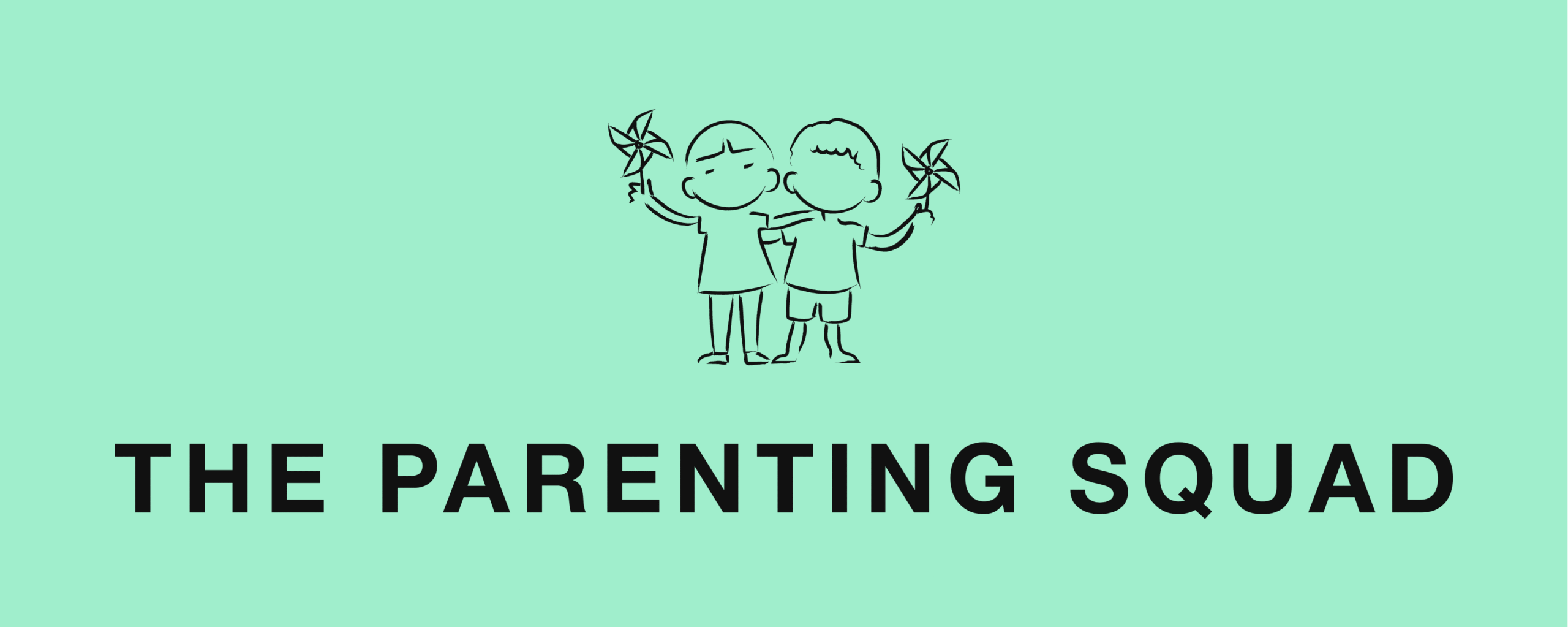Transform Your Parenting Journey with Positive Reinforcement
Ever wondered how a simple “Great job!” can change your child’s behavior? Parents are caught between wanting to encourage their kids and unsure what to do. The good news is positive reinforcement isn’t just a fancy parenting term—it’s a powerful tool that can make your daily interactions more fun and effective.
Positive reinforcement recognizes and rewards the behaviors you want to see more of. Instead of constantly correcting what’s going wrong, you’re actively celebrating what’s going right.
When children act on their environment, their actions are followed by positive or negative consequences that reinforce or discourage those behaviors in the future. This doesn’t just improve behavior, it builds your child’s confidence, strengthens your relationship, and creates a more harmonious home.
In this guide, you’ll learn what positive reinforcement means, why it works, and most importantly, how to use it with your kids. We’ll look at age-specific examples, common mistakes to avoid, and practical strategies you can start using today.
What is Positive Reinforcement
Let’s simplify this: Positive reinforcement rewards the behavior you want to see more of. You use positive reinforcement when your child does something good and you acknowledge it with praise, a hug, or a small reward.
Think of it like this – when your four-year-old puts their toys away without being asked and you respond with “Wow, you cleaned up all by yourself! That was so helpful,” you’re reinforcing that behavior. Your child feels good about what they did and is likelier to do it again.
The examples are endless: praising a toddler for using their words instead of hitting, rewarding a school-age child with extra bedtime stories for completing homework, or acknowledging a teenager’s responsibility with more privileges. The key is to connect the positive response to the specific behavior you want to encourage, so the behavior is rewarded.
From a psychological standpoint, positive reinforcement creates positive associations in your child’s brain. A positive consequence follows a behavior and is more likely to be repeated. Over time, behaviors are learned and reinforced through repeated positive consequences, making them stronger and more consistent.
When they experience something pleasant after a behavior, their brain remembers that connection and motivates them to repeat it. It’s much more effective than punishment because it teaches what TO do, not just what NOT to do. Positive reinforcement is used to increase behaviors by providing desirable outcomes. This increases the likelihood of the behavior happening again.
Operant Conditioning
Operant conditioning is the foundation of positive parenting and explains why some behaviors stick and others fade away. Developed by psychologist B.F. Skinner, this concept shows us that the consequences of a behavior—what happens right after—play a huge role in whether that behavior will happen again.
When positive reinforcement occurs, a pleasant stimulus like praise, a hug, or a small reward immediately follows a desirable behavior. For example, if your child shares their toys and you respond with “I love how you shared with your friend!” you’re increasing the likelihood of sharing happening again. The pleasant feeling your child gets from your response makes the behavior stick.
Negative reinforcement isn’t about punishment. It’s about removing an unpleasant stimulus to encourage a positive behavior. Imagine your child finishes their homework, and as a result, you turn off a nagging timer or let them skip a chore they dislike. The relief they feel makes them more likely to finish homework on time in the future. In both cases, the goal is to increase positive behaviors by changing what happens after the behavior occurs.
Understanding operant conditioning gives parents the power to shape their child’s actions thoughtfully. By focusing on the consequences—adding a reward or removing an unpleasant stimulus—you can reinforce the behaviors you want to see more often, making your parenting journey smoother and more effective.
Types of Reinforcement
To use positive parenting techniques effectively, you need to understand the different types of reinforcement and how they impact behavior. There are four main types: positive reinforcement, negative reinforcement, positive punishment, and negative punishment.
Most parents are familiar with positive reinforcement. It’s when you add a pleasant stimulus like praise or a reward to encourage a desirable behavior. For example, giving your child a gold star for completing their homework is positive reinforcement.
Negative reinforcement involves removing an unpleasant stimulus to increase a desirable behavior. For instance, if your child dislikes a particular chore and you let them skip it after they finish their reading, you’re using negative reinforcement.
The unpleasant task is removed, making it more likely they’ll repeat the reading behavior. Positive punishment is adding an unpleasant stimulus to decrease an undesirable behavior. This could be a time-out or a stern warning when a child breaks a rule. The goal is to make the behavior less likely to happen.
Negative punishment means removing a pleasant stimulus to reduce unwanted behavior. For example, if your child loses screen time privileges after not following instructions, you’re using negative punishment.
These types of reinforcement and punishment are not just for parenting – they’re also used in teaching, animal training, and many other areas where behavior change is the goal. Understanding when and how to use each type can guide your child towards positive behaviors and a happier, more harmonious home.
Why Positive Reinforcement is the Key to Positive Parenting
Positive reinforcement is like sunshine for your child’s developing sense of self. Just as plants grow towards the light, children naturally gravitate towards behaviors that bring them positive attention and feelings of accomplishment. Positive reinforcement is widely used to encourage good behavior in various settings – at home, in classrooms, and during parent training – to help children learn social skills and classroom discipline.
One of the most significant benefits is boosting your child’s confidence and self-esteem. When you consistently notice and celebrate their efforts and achievements, each person responds to positive reinforcement and begins to see themselves as capable and valued. This internal confidence becomes the foundation for overcoming new challenges and developing resilience.
The approach also encourages long-term behavioral change rather than temporary compliance. Children who experience positive reinforcement develop intrinsic motivation—they want to do the right thing because it feels good, not just because they’ll avoid punishment. This creates lasting habits that serve them well into adulthood.
Perhaps most importantly, positive reinforcement strengthens the parent-child relationship. Instead of feeling like you’re constantly the “behavior police,” you become your child’s biggest cheerleader. This shift creates an atmosphere of support and encouragement that makes parenting and childhood more enjoyable.
Think of it this way: Watering the flowers you want to grow rather than just pulling weeds. Both can shape a garden, but one creates beauty and abundance while the other prevents problems.
How to Use Positive Reinforcement Effectively
Set Clear Expectations
The magic happens in the specifics. Instead of saying “Good job,” try “You did such a great job putting all your blocks in the right container!” This tells your child exactly what they did well and makes it more likely they’ll repeat that behavior. Being specific also helps avoid confusion. When praise is too general, children might not know what to repeat. Clear, descriptive feedback gives them a roadmap for success.
Choose the Right Rewards
Not all rewards are created equal, and what motivates one child might not work for another. Some children are motivated by verbal praise and attention while others respond better to tangible rewards like stickers, extra playtime, or special privileges.
The most powerful rewards often aren’t things at all – they’re experiences and feelings. A special one-on-one activity with you, the privilege of staying up 15 minutes later, or your undivided attention can be significant to children.
Remember, intrinsic rewards (building self-esteem and internal satisfaction) tend to be more impactful over time than extrinsic ones. The goal is to help your child develop internal motivation to make good choices.
Be Consistent, but Balanced
Consistency helps children understand expectations and builds trust in your responses. But you don’t need to reward every positive behavior—that can diminish reinforcement’s impact over time.
Think of positive reinforcement like seasoning in cooking. Too little and the flavor doesn’t come through; too much and it becomes overwhelming. Find a balance that keeps the reinforcement meaningful and memorable.
Use Affirmations
Emotional connection amplifies the power of positive reinforcement. Phrases like “I’m so proud of how you handled that situation” or “You showed real kindness when you helped your sister” create a deeper impact than simple acknowledgement.
These affirmations help children understand what they did, why it matters, and how it reflects their character. This builds identity around positive behaviors rather than just temporary compliance.
Model the Behavior You Want to See
Children learn as much from watching as they do from direct instruction. Pairing positive reinforcement with demonstrating the behaviors you want to see creates a powerful learning environment.
Show appreciation for others, handle frustration calmly, and celebrate small victories in your own life. Your child will absorb these patterns and incorporate them into their behavior repertoire.
Reinforcement Schedules
How often and when you deliver reinforcement can make a big difference in how quickly and reliably your child learns new behaviors. This is where reinforcement schedules come in – a key concept in positive parenting and teaching.
A fixed ratio schedule involves giving reinforcement after a set number of responses. For example, you might reward your child with a special treat after they help set the table every five times. This can encourage repeated positive behaviors.
A variable ratio schedule is when reinforcement is given after a changing number of responses—sometimes after three good behaviors, sometimes after ten. This is the most powerful schedule for maintaining desirable behaviors over time as children stay engaged, hoping the next effort will earn a reward.
By using these reinforcement schedules thoughtfully, you can increase desirable behaviors and make positive changes last, at home and in the classroom.
Creating a Positive Environment
A positive environment is the foundation of positive parenting and healthy development. It’s more than just giving rewards—creating a space where positive behaviors are noticed, encouraged, and celebrated.
Start by giving plenty of positive reinforcement, such as praise, encouragement, and small rewards, whenever your child shows positive behavior. At the same time, try to minimize negative reinforcement, such as criticism or punishment, which can sometimes discourage children or make them anxious.
Look for any obstacles that might be hindering your child’s success. Maybe they need more time, better resources, or clearer instructions. Remove these obstacles and set them up for success.
Social skills are also part of a positive environment. Give your child opportunities to interact with peers, join group activities, and practice cooperation. These experiences help them learn to get along with others and build confidence.
As a parent, teacher, or caregiver, you play a key role by modeling positive behaviors, giving constructive feedback, and consistently encouraging your child’s efforts. When children feel supported and valued, they will thrive and develop the skills they need for lifelong success.
Examples of Positive Reinforcement by Age Group
Positive reinforcement is a powerful tool for shaping behavior at every age, mainly when used consistently in educational settings. Reinforcement in the classroom is widely recognized as an effective strategy, and schools often use positive reinforcement techniques to encourage good behavior and increase student engagement.
Toddlers (Ages 1-3): Focus on immediate, simple acknowledgments. “You used your words to tell me you were upset instead of hitting. That was the right choice!” Pair verbal praise with physical affection like hugs or high-fives.
Elementary-aged Children (Ages 4-10): Add privileges and choices as rewards. “Since you finished your homework without reminding, you can choose what we have for dinner tonight.” This age group responds well to charts, stickers, and earning special activities. Gold stars are a classic form of positive reinforcement in schools, providing tangible rewards that motivate students to complete tasks and demonstrate desired behaviors.
Teenagers (Ages 11-18): Acknowledge their growing independence and maturity. “I noticed you handled that conflict with your friend maturely. Your communication skills have grown.” During adolescence, friends and peer pressure can greatly influence behavior, as teens often seek social approval and validation from their peer group. Increased freedom and trust can be powerful reinforcement for teens.
The key across all ages is matching your response to your child’s developmental stage and personality. Some children crave public recognition while others prefer private acknowledgment.
Monitoring Progress
Monitoring your child’s progress is key to positive parenting and ensures your reinforcement strategies work. By monitoring how often positive behaviors occur, how long they last, and how intense they are, you can see what’s working and where you need to adjust.
Keep a simple log or chart to record when your child displays positive behaviors like sharing, completing homework, or using polite language. Notice if specific strategies lead to more frequent or stronger positive behaviors, and be ready to tweak your approach if progress stalls.
Sometimes, you might notice intervening behaviors, such as distractions or competing interests, that prevent your child from succeeding. Identify and address these, whether by removing distractions or offering extra support.
Regularly reviewing your child’s progress helps you refine your reinforcement techniques so they continue to promote positive behaviors and healthy development. It also allows you to celebrate growth, no matter how small, and keep your child motivated to become their best self.
Encouragement for Lasting Change
Positive reinforcement changes more than just behavior—it shapes how children see themselves and their abilities. When you consistently notice and celebrate your child’s efforts and growth, you build their confidence to take on bigger challenges and develop stronger character. The best part is everyone wins. Parents feel more connected to their child, daily life is more enjoyable, and the home environment becomes more cooperative, not confrontational. A reinforcement schedule that delivers rewards after a variable number of positive behaviors can help maintain motivation and encourage consistent positive behavior over time.
Try this week by choosing one specific behavior to acknowledge and celebrate with your child. Maybe it’s using their words to tell you they’re upset instead of hitting, finishing their homework without being reminded, or showing kindness to a sibling. Pay attention to these moments and tell your child you see their efforts.
Parenting is hard work, but positive reinforcement makes it more enjoyable for everyone. Providing the reinforcing stimulus immediately after the behavior is key to strengthening that behavior and encouraging it to happen again. The small moments of recognition and celebration you give today lay the foundation for your child’s future success and happiness.
Want to make this even easier? Read The Parenting Squad blogs today!







